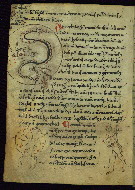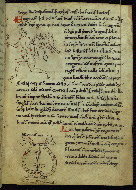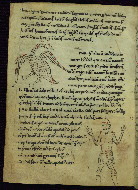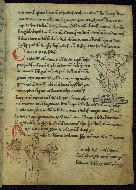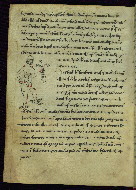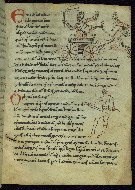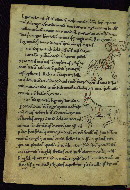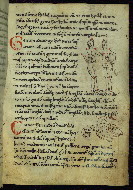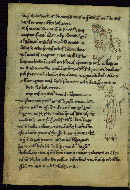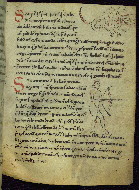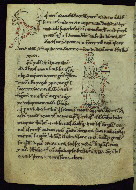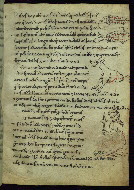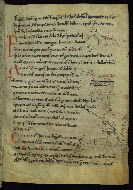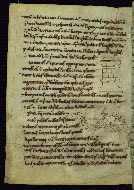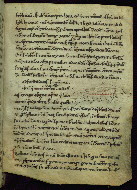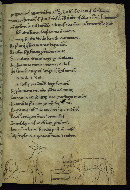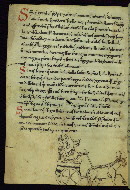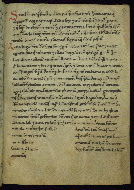Home > Digitized Walters Manuscripts
This document is a tranformation of a TEI P5 XML manuscript description incorporating images. If you have trouble reading special or non-Latin characters on this page, please make sure you have appropriate Unicode fonts installed and an up-to-date web browser.
Walters Ms. W.734, Hyginus, Astronomica
Browse images (Browse images in a new window) | TEI in XML format
W.734
Hyginus, Astronomica
Authority name: Hyginus, C. Julius
Known as: Hyginus
Authority name: Augustine, of Hippo, Saint, 354-430
Known as: St. Augustine
This manuscript, W. 734, is a thirteenth-century copy of an astronomical treatise, Astronomica, attributed to the first century Roman scholar Gaius Julius Hyginus. There is some question as to whether or not the unpolished Latin prose of the Astronomica was in fact by the learned scholar Hyginus. Regardless, this text was in circulation in western Europe along with other astronomical and astrological works by the ninth century. Illustrated Carolingian versions of the texts often faithfully imitated classical models in both style and detail. No illustrated Carolingian examples of Hyginus still survive, however a manuscript of Hyginus from 988 by Ademar, a monk at Saint-Martial of Limoges, seems to be faithfully copied from a Carolingian model. The most distinctive feature of the iconography of W.734 is the miniature of the two stars of Cancer, the “Aselli,” drinking from a trough. This image type recalls a very small collection of ninth century manuscripts (cf. Madrid Bibl. Nacional, cod. 3307) dating between ca. 820-828, and W.734 is reminiscent of Carolingian style as well. The text of the Astronomica itself addresses various cosmographical topics including the Earth and the spheres, the mythological legends connected with the constellations, the planets, the arrangement of the stars in the constellations, the circles of the celestial sphere and the movements of the planets, the sun and the moon, and their appearance. This copy likely dates to ca. 1200, however pinpointing its place of creation has proven more complicated, with its parchment and script having been linked to Italy, while France or Spain have also been suggested as a place of origin.
12th century CE
France, Spain, or Italy (?), flyleaves and pastedown Italian
Book
Astrological
The primary language in this manuscript is Latin.
Parchment
Thick, low-quality parchment, with many original holes and repairs; paste-downs and flyleaves reused from twelfth-century commentary on St. Augustine; very lightly ruled in lead, pricked margins; guide letters along inner margin
Foliation: i+22+i
12.0 cm wide by 16.8 cm high
12.3 cm wide by 16.8 cm high
- Columns: 1
- Ruled lines: 24
- Layout does not apply to fragmentary text from St. Augustine's commentary on Resurrection: 1 column, 20 lines
- Title: Astronomica
- Author: Hyginus, C. Julius
- Hand note: Text in early Gothic miniscule in black ink; front and back flyleaves with St. Augustine's commentary Caroline miniscule
- Decoration note: 39 small pen drawings throughout depicting constellations in simple outlines touched in red
- Title: St. Augustine commentary on Resurrection
- Author: Augustine, of Hippo, Saint, 354-430
- Rubric: (P)oud viri ut femine ipprio fexu resurgent
- Incipit: Pleriq ppt hoc dic apt's
- Contents: Commentary on the Resurrection by St. Augustine
- Text note: Fragmentary text used for back and front pastedowns and flyleaves
- Hand note: Caroline script, red rubrics and accents with black script
- Title: Astronomica
- Author: Hyginus, C. Julius
- Incipit: Et site studio gramatice artis
- Contents: Book I, opening paragraph of book II (myths of book II missing), book III, first chapter of book IV missing, text of book IV beginning with chapter II, breaks off in chapter VIII, recommences with chapter XII and ends with the final sentences of chapter XIII, chapters XXIX and XL from otherwise missing second book, relating the fables of Hydra and Ara with slight modifications, are combined with chapters XXVIII and XXXIX on Hydra and Ara from book III, chapter XXIX of book III lacks the paragraph on "nodum caelestem"
- Text note: Hyginus text lacks the title: "Liber Hygini Periti Magistri de Astronomia Hyginus M Fabio Plurimam Salutem" which is frequently found in other similar manuscripts
- Decoration note: Small pen-drawn miniatures fols. 5v, 6r, 6v, 7r, 7v, 8r, 8v, 9r, 9v, 10r, 10v, 11r, 11v, 12r, 12v, 13r, 13v, 14r, 20r, and 20v
fol. 5v:
fol. 6r:
fol. 6v:
fol. 7r:
fol. 7v:
fol. 8r:
fol. 8v:
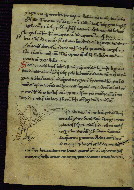
- Title: Sagitta (arrow nearly chopped off), Aquila holding book
- Form: Pen drawing
- Comment:
It is possible that the eagle holding a book is a reference to John the Evangelist.
fol. 9r:
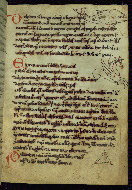
- Title: Delphinus, Equuleus or Pegasus, Deltothon
- Form: Pen Drawing
- Comment:
Winged horse usually depicts Pegasus, here seems to show Pegasus' offspring or brother Equuleus
fol. 9v:
fol. 10r:
fol. 10v:
fol. 11r:
fol. 11v:
fol. 12r:
fol. 12v:
fol. 13r:
fol. 13v:
fol. 14r:
fol. 20r:
fol. 20v:
fol. 21r:
The binding is not original.
Modern red velvet
Created in twelfth century in France, Spain, or Italy, likely based upon a Carolingian model
E. P. Goldschmidt, 1937, cat. 44, no. 12
Walters Art Gallery acquired from Goldschmidt, 1947, cat. 82, no. 1
Museum purchase, 1947
Miner, Dorothy. "Since de Ricci—Western Illuminated Manuscripts Acquired since 1934. A Report in Two Parts: Part II. Journal of the Walters Art Gallery 31/32 (1968/1969): 40-118, pp. 83-87.
Principal cataloger: Walters Art Museum curatorial staff and researchers since 1934
Cataloger: Mackin, Elliot
Editor: Herbert, Lynley
Conservator: Quandt, Abigail
Contributors: Emery, Doug; Han, Yuna; Tabritha, Ariel; Wiegand, Kimber
The Walters Art Museum
Licensed for use under Creative Commons Attribution-ShareAlike 3.0 Unported Access Rights, http://creativecommons.org/licenses/by-sa/3.0/legalcode. It is requested that copies of any published articles based on the information in this data set be sent to the curator of manuscripts, The Walters Art Museum, 600 North Charles Street, Baltimore MD 21201.
